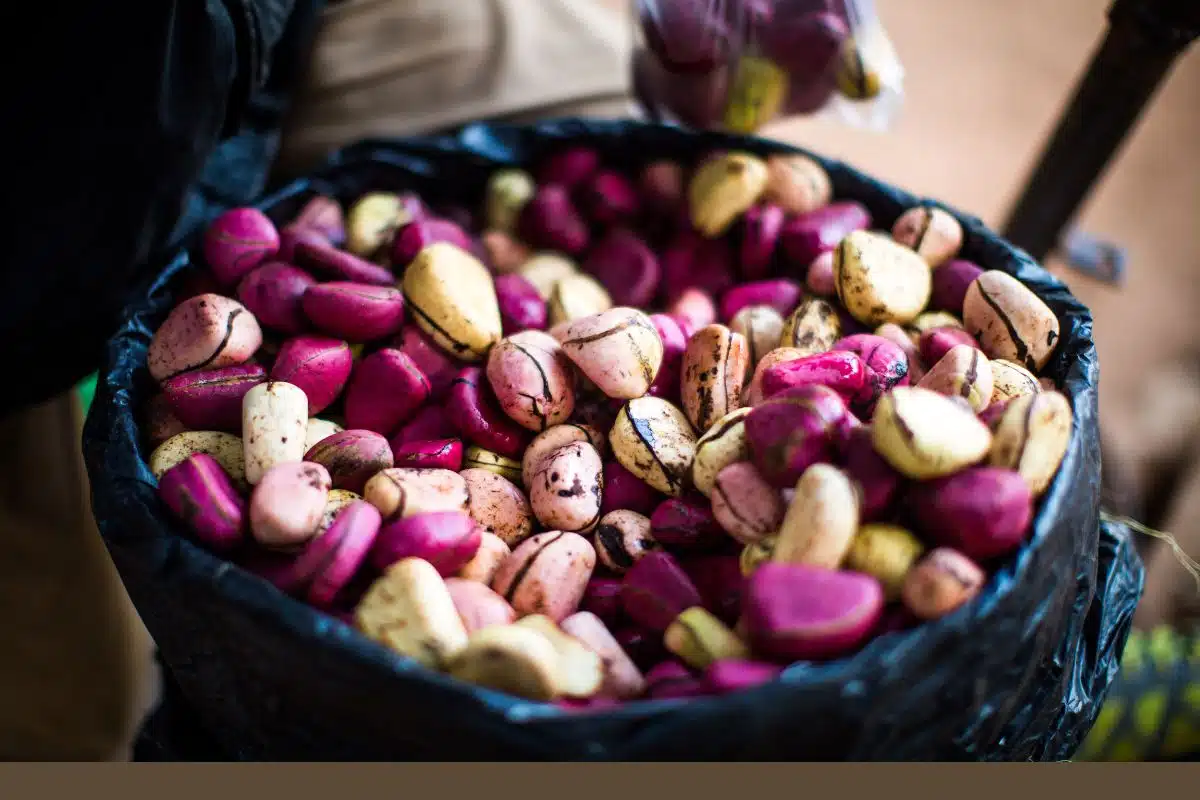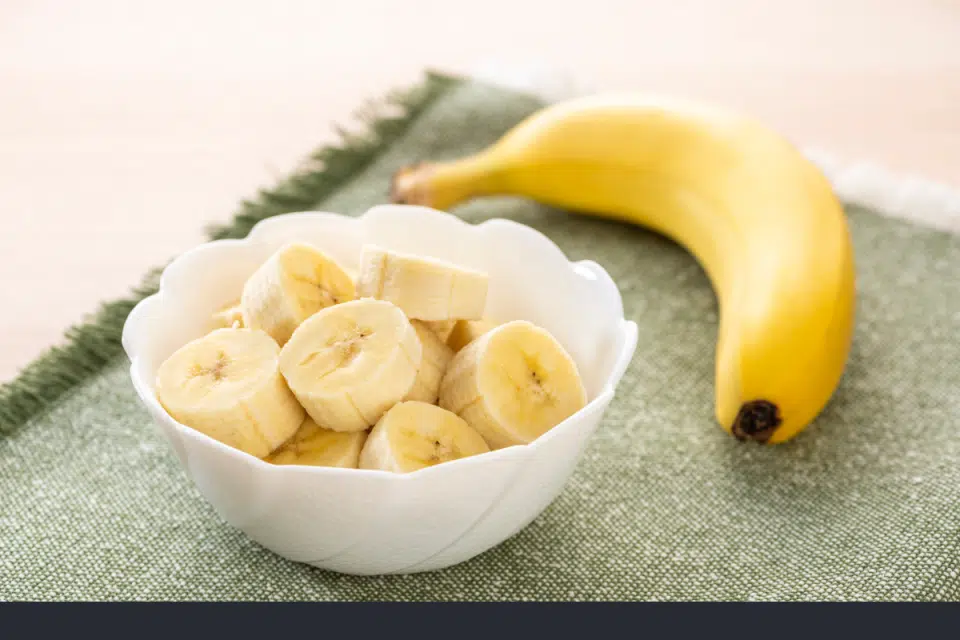16 African Fruits to Try at Least Once

Africa is a wonderful and diverse continent of contrasts. More than 80% of the continent is tropical, but, surprise, the majority of it is also in the Northern hemisphere. It has areas of intense rain, but also areas of intense dryness. So, it makes sense that Africa has a wide variety of climates that produce an abundance of indigenous and non-native fruit.
Trying the local fruit when you travel is like a fantastic voyage of sweetness. Here we will talk about only a few of the many fruit found in this expansive and vibrant continent. Some will be familiar and some will be unknown, but consider this an invitation to explore.
1. Dates

There is arguably no other fruit with the historical, cultural, and religious importance that the date carries. A great article about that can be read here. Their sticky goodness is enjoyed in Africa, and you could even say they are honored, especially in Northern Africa. They are a versatile stone-fruit that can be enjoyed fresh or dried, in sweet or savory dishes, and even salads and drinks.
My Canadian self loves a good date square, but Moroccans often level up their use of dates into their delicious tagines, and Nigerians make an amazing drink with dates, coconut, and tiger nuts that needs to be tried.
2. Papaya

Who doesn’t love a fruit-bearing tree in their backyard? Papaya trees are probably one of the most abundant fruit trees all over the continent because they are easy to care for and produce a lot of its sweet, melony fruit that is used for breakfast, snacks and desserts, and to make drinks and jams.
Anyone who has had fresh papaya off the tree knows just how delicious it is.
3. Soursop/Custard apple

At first glance, the soursop looks like some sort of spiky creature from a horror film. But cut it open and you will find a pure-white, dreamy fruit.
It is also known as custard apple, and once you taste its sweet creaminess, you will understand why. With hints of apple, strawberry and citrus, it is a unique fruit that is often simply eaten raw.
4. Ackee

All over Western and Central Africa, you will find children stopping by ackee trees to see if the fruit is ripe yet. They know better than to try and eat one before it is ripe as parents warn about their toxicity before they are ready.
So, the young ones check every day until the fruit cracks open and they can see the three black seeds, meaning they are now ripe. Its sweet and nutty taste makes it suitable to eat raw, but it will also often be used in savory meat dishes.
Editor’s Note: Ackee seeds have been brought by African slaves to the Caribbeans and ackee is now a popular fruit in Jamaica, Barbados and other Caribbean islands.
5. Sào Tome Peach

The São Tomé peach is possibly the most interesting fruit on this list. It is very rare and grows only on the idyllic island of São Tomé e Príncipe. Another unique trait is that this fruit grows on the trunk of the tree, making wild animals very happy that they can grab an easy snack.
The fruit itself is beautiful – triangular, purple in color, and with a velvety skin, like a little regal pouch. The taste and texture are like pears, and because they are so rare and hard to find in markets, they are usually consumed fresh, if you are lucky enough to find them.
6. Marula

Marula is another fruit on this list with historical and symbolic importance – it is a legally protected tree in South Africa. Indigenous to Southern Africa, it has been shown to have sustained ancient civilizations across the region. It has significant health benefits and is used for medicinal purposes. It can be eaten raw or cooked and is often used to make jams, drinks, and desserts.
Perhaps most famous is its use in alcoholic beverages. The sweet-sour, acidic fruit is perfect for fermentation, becoming a traditional brew celebrated in several southern African countries. Amarula cream liqueur is another popular marula beverage; it’s produced in South Africa and exported all over the world.
7. Bananas

Bananas may possibly be the most common fruit around, but with anywhere up to 1,000 varieties around the world ranging in size, shapes and color (red! blue!), they can’t be called ordinary. They originate from South and Central America, but they can be found in many tropical African countries.
For simplicity, people usually categorize bananas into dessert bananas and cooking bananas with dessert bananas including the hundreds of sweet varieties and plantains generally used for cooking. Both kinds of bananas have significant importance across Africa is the local diet, but also for agricultural purposes as cash and export crops.
Dessert bananas are often eaten as simple snacks and can be found all over at street markets and roadside vendors. A personal favorite is the apple banana, or banana maçã, as it is known in Portuguese-speaking countries. These gems are cute mini bananas with a lovely mild strawberry-apple taste and smell that you absolutely have to try if you get the chance!
Dessert bananas are also made into a variety of delicious desserts all over the continent, such as baked bananas (Akwadu from Equatorial Guinea), Accra banana fritters (Cameroon), and banana coconut bake (Tunisia).
Cooking bananas are a staple in many parts of Africa and around the world, and are used as a substitute for other starchy foods such as potatoes. In East Africa, matoke is often cooked and mashed and eaten with meat and veggie stew or soup. The humble plantain, however, is as versatile as the humble potato and can be boiled, roasted, fried into chips, eaten raw, and ground into flour to make fufu, a popular side dish in Central and West Africa.
8. Breadfruit

The African breadfruit is a large, melon-like fruit with a sweet, starchy and, wait for it, bready flavour. You can’t eat it raw, and only the seeds are eaten. They are dried and then eaten with or as a meal, roasted for a snack or ground to make flour for porridge, or even to make a boozy drink.
You can find them in many countries of Western, Central, Eastern and Southern Africa.
9. Palm Fruit

The propagation and consumption of palm fruit goes back thousands of years and the oils produced from the flesh and the kernel is of significant economic and cultural importance in Central and West Africa.
Besides their huge export value, palm oil is used in many local dishes such as egusi soup, while palm kernel oil has numerous industrial uses such as making soap and as fuel.
10. Pepper Fruit

Pepper fruit gets its name from its flavor – it is a berry with a kick. You can eat it raw, or because of its sharp flavor, it is used in all kinds of dishes. Celebrations throughout Central and Western Africa aren’t complete without this fruit, often being served with palm wine, kola nuts, and bitter kola.
11. Baobab

Nostalgic images of Africa often picture the prehistoric baobab tree with its massive trunk and branches that look like roots, which is why it is sometimes called the upside-down tree. Found in many African countries, the tree produces leaves and flowers for very short periods during the year. The fruit is melon-shaped, but with a hard shell that is hard to crack, and, interestingly, dries while still on the tree.
Crack it open and the pulp looks like little pieces of white or pink chalk, but it has a delicate citrusy flavor that can be eaten raw, made into a drink, or used in cooking. Also called the tree of life, the leaves are used as medicine, the bark is used for textiles, and the fruit has many health benefits.
12. African Star Apple

The star apple is the star of Western Africa fruit, getting its name from the arrangement of the five seeds found inside the white flesh. Often simply eaten raw by squeezing it open, sucking out the juice, then opening it up to eat the remaining pulp, it can also be used in desserts, made into jams, juices and non-alcoholic or alcoholic drinks.
Eat it green if you like it tart, or wait until it’s ripe to get its sweetest flavour.
13. Kola Nut

Another star of West African fruit is the kola nut. It also has cultural significance, being used as a symbol of peace and in a number of traditional and religious duties. Not to be confused with the leafy bitter kola plant, the kola nut fruit is famous for having once been used for flavoring Coca-Cola.
With a bitter nutty taste that gets sweeter as it is chewed, it is known for its high levels of caffeine and other energizing properties, and often used in the production of a variety of drinks.
14. African Walnut

Another nutty fruit, this time found in Central African countries, is the African walnut, also known as ukpa, asala, or okwe. Similar to a chestnut in shape but with a darker brown or black shell, it is rather bitter when raw, so best to bake or roast them to get the most out of its creamy sweet nuttiness.
With loads of health benefits, these are great as a snack in between meals.
15. African Pear

Like a mini eggplant, the African pear has purple skin and a whitish green flesh and can be found all over Western and Central Africa. Known also as bush pear, safou, or ube, it is an important fruit for its use in traditional medicine, as well as a staple food. Acidic if eaten raw, it is usually cooked to enjoy its sweet buttery flavor.
During the rainy season in Nigeria, many meals of oka na ube re consumed. This is a combination of maize and pear, either boiled or roasted and eaten together for a much loved flavor combination.
16. Tamarind

Last but certainly not least, the tamarind is well-known for its many edible and practical uses from West Africa and further to the northern region of the continent. Westerners might know HP or Worcestershire sauce but might not know tamarind is a key ingredient in both.
The sour-sweet flesh of the velvety bean-like pod is used to add tang to many savory dishes, to make drinks, in traditional medicine, and even for industrial purposes such as metal polish and leather dyes. This unusual fruit is surprisingly as versatile as it is delicious.
Many refer to Africa as though it can somehow be only one thing, but this continent is one to be experienced for the variety, diversity, and vibrancy that it offers. Enjoy!

